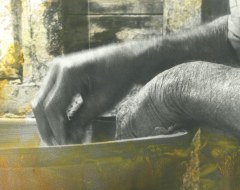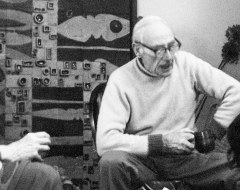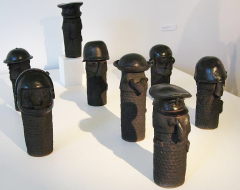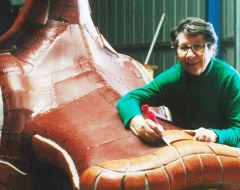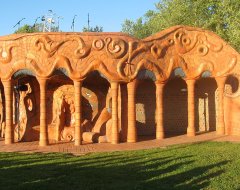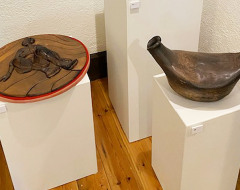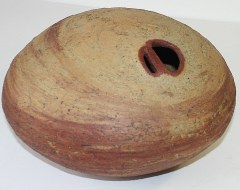Buzz Hughan began his adult life by serving in the First World War with his brother on the Western Front in France. Both survived and were able to return home to Australia but suffered mustard gas poisoning which had lifelong affects. Buzz went on to become a mechanical engineer and then retrained as electrical engineer. It was Buzz’s wife and son who first developed interests in craft and ceramics. Before long he had set up his own studio in the backyard and his engineering skills led him to build a kiln and create a wheel out of a crankshaft.
Terrance Lane wrote of Hughan in his book Harold Randolf Hughan (1893-1987). “It was important to him that his pots were domestic, functional and affordable; yet they were also distinguished by subtle shapes and beautiful forms, particularly the Orient- inspired celadons and tenmokus. He gained a devoted following, especially for his large platters, decorated withoriental motifs, native iris or sprays of bamboo. While prolific, he worked at his own pace well into his ninties. “I do not make pottery for a living’” Hughan said in 1984, “it is purely for pleasure and always has been”.
In 1950 Hughan had an exhibition at Georges Gallery, Melbourne, which led to him being one of the first contemporary potters to be represented in the National Gallery of Victoria. His work was subsequently collected by the National Gallery of Australia, most state and regional galleries and the Victoria and Albert Museum, London. In 1970 he was invited to be patron of the Victorian Ceramic Group, an award in his name was established and in 1978 he was appointed MBE.
When Judy Lorraine met Buzz Hughan they had both already developed distinct styles. Judy had originally trained as an architect and worked for a few years in London. Back in Australia and after an artists’ tour of Japan her interest in ceramics flourished. She too set up a studio in her backyard where she produced raw, earthy sculptural pieces. Over time she worked in blackware and developed an extensive range of ceramic musical instruments, including ocarinas, drums, stringed instruments, horns and gamelans. Judy not only created prolifically but also taught. She was a lecturer in the Council of Adult Education, Chisholm Institute and RMIT as well as artist in residence in many schools and community projects.
In 1983 Judy was selected to work with a Benalla group to design the Benalla Ceramic Mural. With her architectural background and extensive experience with clay she was well suited to the project. Her teaching background meant that she could run many community workshops to produce tiles and features for the mural. Judy worked on the Benalla Mural for 27 years and it was officially opened in 2010.
Both Buzz and Judy remained creative for many decades and became icons in the Australian ceramic community. They both broke new ground and inspired numerous generations of creative people. Their joint exhibition at WAS Gallery celebrated their work, lives and connection.
